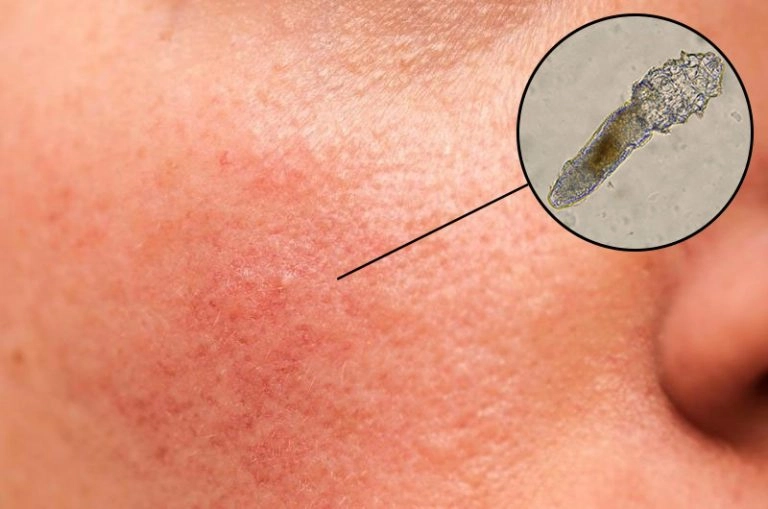Signs Demodex Mites Are Dying: Understanding The Symptoms And Solutions
Demodex mites are microscopic parasites that can live on human skin, particularly on the face, and are often associated with skin conditions such as rosacea and acne. Understanding the signs that demodex mites are dying is crucial for those suffering from skin issues linked to these pests. In this article, we will explore the various indications that these mites are no longer thriving, the implications of their presence, and effective treatments to eliminate them. This knowledge can empower you to take control of your skin health and find effective solutions.
As we delve into this topic, it is essential to recognize that demodex mites are a natural part of the skin's ecosystem. However, an overgrowth can lead to various skin problems. Therefore, recognizing the signs that demodex mites are dying can help you assess the effectiveness of your treatment and ensure your skin is returning to a healthy state.
This article aims to provide you with expert insights into demodex mites, their life cycle, and the symptoms indicating their decline. By the end of this article, you will have a comprehensive understanding of how to manage and treat demodex infestations effectively.
- Is Cheryl Casone Married A Deep Dive Into Her Personal Life
- David And Rebecca Muir Wedding A Celebration Of Love And Joy
- Understanding Clothoff A Comprehensive Guide To Its Benefits And Applications
- Desiree Washington Now A Journey Through Triumph And Resilience
- Exploring The Life And Achievements Of Yodit Tewolde
Table of Contents
- Understanding Demodex Mites
- Symptoms of Demodex Infestation
- Signs Demodex Mites Are Dying
- Treatment Options
- Preventing Demodex Reinfestation
- When to See a Doctor
- Frequently Asked Questions
- Conclusion
Understanding Demodex Mites
Demodex mites are tiny arachnids that reside in the hair follicles and sebaceous glands of humans. There are two primary species that affect humans: Demodex folliculorum and Demodex brevis. While these mites are typically harmless, they can proliferate under specific circumstances, leading to various skin disorders.
Life Cycle of Demodex Mites
Demodex mites have a life cycle that includes several stages: egg, larva, nymph, and adult. The entire cycle lasts about 14 to 18 days, during which the mites reproduce and can increase in number significantly.
Factors Contributing to Overgrowth
Several factors can contribute to the overgrowth of demodex mites, including:
- Is Harris Faulkner Leaving Fox Network Everything You Need To Know
- Russell Wilson Net Worth A Comprehensive Overview
- Bishop Family The Hells Angels Legacy
- Karlan Denio A Comprehensive Look At The Rising Star
- David Muir Personal Life An Indepth Look At The Life Of The Abc News Anchor
- Weakened immune system
- Hormonal changes
- Oily skin
- Use of certain medications
Symptoms of Demodex Infestation
When demodex mites are present in large numbers, they can cause a variety of symptoms, such as:
- Redness and inflammation of the skin
- Itching and irritation
- Flaky or scaly skin
- Acne-like breakouts
- Enlarged pores
Recognizing these symptoms early can lead to more effective treatment and management of the condition.
Signs Demodex Mites Are Dying
When effective treatment is initiated, there are several signs that suggest demodex mites are dying off:
- Decrease in redness and inflammation of the skin
- Reduction in itching and irritation
- Improvement in overall skin texture
- Less oily skin
- Fewer acne-like breakouts
It is important to monitor these changes closely, as they can indicate the success of your treatment regimen.
Treatment Options
Various treatment options are available for managing demodex infestations. These include:
- Topical treatments such as creams and lotions containing acaricides
- Oral medications prescribed by a healthcare professional
- Natural remedies such as tea tree oil and garlic
- Maintaining proper skin hygiene and care
Topical Treatments
Topical treatments often contain ingredients specifically designed to target and kill demodex mites. Common active ingredients in these treatments include:
- Permethrin
- Benzyl benzoate
- Tea tree oil
Oral Medications
In more severe cases, oral medications may be necessary to reduce the mite population. These medications should only be taken under the guidance of a healthcare provider.
Preventing Demodex Reinfestation
Once the mites have been eliminated, it is essential to take steps to prevent reinfestation. Some effective strategies include:
- Regularly washing bedding and pillowcases
- Avoiding the sharing of personal items, such as towels and makeup
- Maintaining a balanced skincare routine
- Monitoring skin conditions and seeking timely treatment
When to See a Doctor
If you suspect that you have a demodex infestation and over-the-counter treatments are not effective, it is advisable to consult a healthcare professional. They can provide a proper diagnosis and recommend suitable treatments tailored to your specific needs.
Frequently Asked Questions
Here are some common questions regarding demodex mites:
- Can demodex mites be completely eliminated? Yes, with appropriate treatment, demodex mites can be effectively managed and reduced in number.
- Are demodex mites contagious? No, demodex mites are not contagious and are typically transmitted through close personal contact.
- How can I tell if my treatment is working? Signs such as reduced redness, less itching, and improved skin texture indicate that the treatment is effective.
Conclusion
In summary, recognizing the signs that demodex mites are dying is essential for managing skin health effectively. By understanding the symptoms of infestation, treatment options, and preventive measures, you can take proactive steps to ensure your skin remains healthy and free from these parasites. If you have any questions or experiences to share, feel free to leave a comment below, and do not hesitate to explore our other articles for more information on skin health.
Thank you for reading, and we hope you found this article helpful. Remember to take care of your skin, and we look forward to seeing you return for more valuable insights!
- Kaitlan Collins Bio The Rise Of A Prominent Journalist
- Lovely Mimi Net Worth A Deep Dive Into Her Wealth And Success
- Kat Timpf Net Worth And Inheritance A Comprehensive Analysis
- Ippa 010054 A Comprehensive Guide To Understanding The Benefits And Applications
- Candice Madrid The Rising Star Of The Entertainment Industry

What Are The Signs Demodex Mites Are Dying (2024)

Signs Demodex Mites Are Dying What You Need to Know Heathe

Uncovering the Role of Demodex Mites in Rosacea Ungex